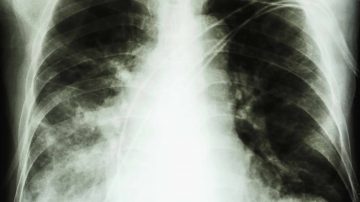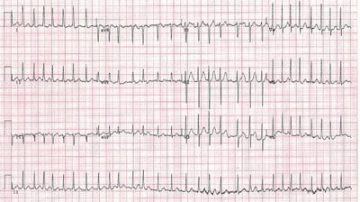Complications from long-term deep sedation and the lack of adequate pain control for mechanically ventilated intensive care unit (ICU) patients has resulted in the development of sedation protocols emphasizing pain control over sedation. These protocols use either remifentanyl or fentanyl.…
Read MoreAre MRSA Antibiotics Overprescribed for Community-Acquired Pneumonia? – NEJM Journal Watch Nearly 30% of hospitalized CAP patients received antibiotics for MRSA, even though fewer than 1% had MRSA-associated CAP. A recent multicenter, prospective, active-surveillance study of 2259 patients hospitalized with…
Read MoreIt has always been a therapeutic dilemma whether to anticoagulate patients with Afib and a history of prior intracranial hemorrhage (ICH). This study used a Taiwanese national database to identify 12,917 patients with an ICH history and new AF and…
Read MoreMore Articles – Emergency Procedures, Lumbar Puncture, medical procedures, Neurological diseases, Traumatology
Traumatic lumbar puncture (LP) is fairly common and occurs when the needle causes bleeding into the subarachnoid space. Introduction of peripheral red blood cells (RBCs) in cerebrospinal fluid (CSF) increases CSF protein levels, thereby complicating diagnosis of bacterial meningitis. This…
Read MorePleural fluid pH is an important measure for determining the clinical management of pleural diseases. For example, a pleural fluid pH <7.2 in patients with suspected pleural infection should mandate the placement of a chest tube. However, pleural fluid pH…
Read MoreThis meta-analysis examined 58 prospective ED studies that involved diagnostic test accuracy among patients with suspected Non-ST elevation ACS. The meta-analysis found that the following clinical findings predicted excess ACS risk in patients presenting with chest pain: hypotension (systolic blood…
Read MoreThis population-based cohort study between 2000 and 2012 from the UK’s Health Improvement Network database compared diagnoses between 275,000 adults who had been prescribed corticosteroids and 626,000 who had not been prescribed corticosteroids. The query was whether corticosteroid recipients had…
Read MoreObesity hypoventilation syndrome (OHS) is defined by the triad of obesity (BMI >30 kg/m2), daytime hypoventilation (Paco2 >45 mm Hg), and sleep-disordered breathing in the absence of other causes of hypercapnia, such as severe obstructive lung disease, severe interstitial lung…
Read MoreTargeting to 88%–92% did not cause harm. There is little data on ventilator weaning when it comes to oxygenation goals. Many intensivists adjust the ventilator to maintain an oxygen saturation of at least 95% to buffer against desaturation. However, there…
Read MoreThe anti-Xa anticoagulant lowers bleeding and death rates in a routine clinical care setting. In patients with non–ST-segment elevation myocardial infarction (NSTEMI), the factor Xa inhibitor fondaparinux was noninferior to enoxaparin in reducing ischemic outcomes in the OASIS-5 study. In…
Read MoreIn prior randomized trials, the incidence of intracerebral hemorrhage (ICH) was significantly lower with the new oral anticoagulants (NOACs) than with warfarin (Blood 2014; 124:1968). However, it remains unclear if clinical outcomes are similar when ICH does occur with different…
Read MoreRecent studies have determined the best technique for improving the safety of thoracentesis. The patient should be sitting as upright as possible. Then, ultrasound the posterior back and locate a catheter insertion point at least 6 cm lateral to the…
Read MoreA retrospective study compared the performance of Fluid and Catheter Treatment Trial (FACTT) Lite, FACTT Conservative, and FACTT Liberal. The prior FACTT demonstrated that conservative fluids is superior to liberal fluids for ARDS. A simplified conservative fluid protocol (FACTT Lite)…
Read MoreA collection of recent studies has helped determine the best protocol for removing chest tubes. For instance, a trial of water seal for at least six hours is recommended before discontinuation. The water seal reduces the need for another chest…
Read MoreIn 2015 a meta-analysis found that when an ultrasound was used during a radial arterial catheter placement the first pass success rate improved. In the eleven trials that met inclusion criteria over 800 patients were enrolled. Compared to the palpation-guided…
Read MoreCategories
- ACLS (1)
- Arterial line (33)
- Cardiovascular diseases (77)
- Central line (55)
- Chest Tube (39)
- Dermatology (4)
- Emergency Procedures (139)
- Endocrinology (6)
- Endotracheal Intubation (36)
- Events (24)
- FAST Exam (12)
- Featured (113)
- Featured Procedure (42)
- Gastrointestinal diseases (32)
- Ginecology (3)
- Glidescope Intubation (21)
- Hematology (33)
- Hospital Procedures (85)
- Infections (32)
- Intraosseous line (8)
- King Tube (27)
- Laryngeal Mask Airway (18)
- Lumbar Puncture (36)
- Mechanical Ventilation (34)
- Medical General (95)
- medical procedures (258)
- Needle Decompression (6)
- Nephrology (11)
- Neurological diseases (12)
- Oncology (4)
- Paracentesis (32)
- Pericardiocentesis (3)
- Procedural Sedation (19)
- Respiratory diseases (85)
- RUSH Exam (8)
- Thoracentesis (37)
- Traumatology (24)
- Travel (27)
- Ultrasound-Guided Peripheral IV (13)














